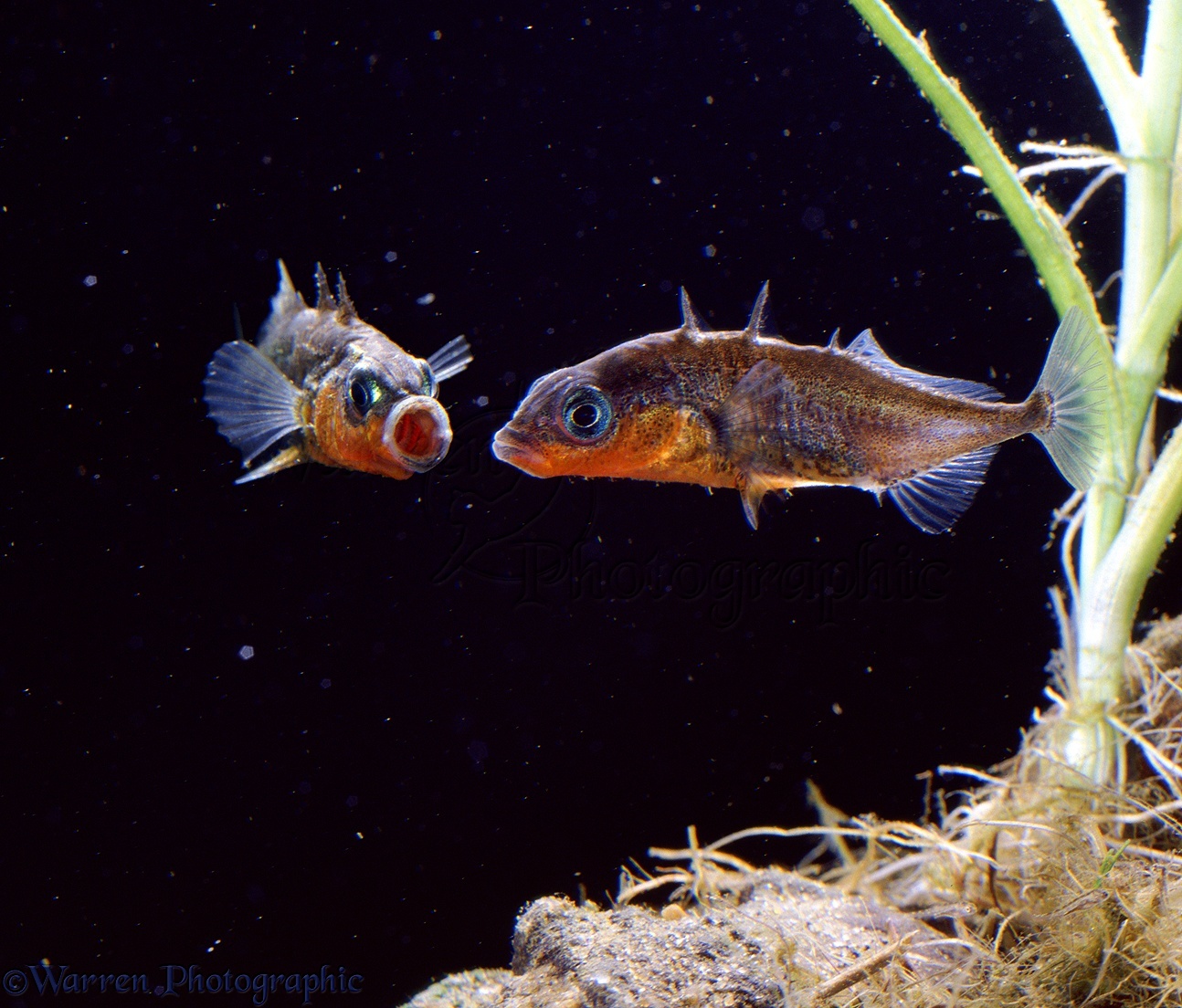
Three Spined Stickleback (Gasterosteus aculeatus) males in territorial dispute by Warren Photography.
Behavior is Heritable?
Personality and behavior are not often thought of as heritable, meaning that those traits aren’t usually passed down from parents to offspring. The two are usually thought to be a product of the environment in which an organism lives. Why then are certain organisms able to exhibit certain personality or behavioral traits regardless of their environment? Humans have this ability, depending on the environment most of the time, they adapt to where they are at in order to be most successful. The same could be said for any organism, they are trying too obtain the highest fitness and reproductive rates. Some traits such as levels of aggression, can determine whether an individual survives or is eaten by a predator. If aggressiveness is a positive trait for survival and reproductive success, how is it passed down to future generations? Even though attitude is not necessarily thought of as a gene, it is possible that the combination of many genes and environment an organism lives in can play a factor in behavioral tendencies. Natural selection works in a fascinating way that allows for beneficial alleles, genes and mutations to increase in frequency as time goes on. If it is seen that an allele or trait is beneficial, females will look for males with that particular trait (sexual selection), so that their offspring have a better chance of surviving and reproducing in the future. This extraordinary phenomena can be seen in many different organisms, such as humans, elephants and even fish. Continue reading “Aggressive Tendencies Not All That Bad”



